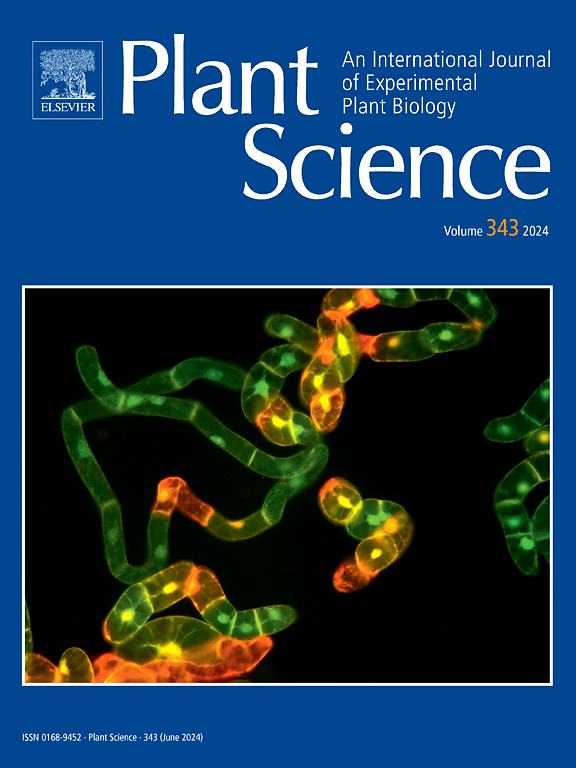BAHD酰基转移酶OsSLG通过整合铜绿素和水杨酸途径介导水稻的耐镉能力
IF 4.2
2区 生物学
Q2 BIOCHEMISTRY & MOLECULAR BIOLOGY
引用次数: 0
摘要
本文章由计算机程序翻译,如有差异,请以英文原文为准。
BAHD acyltransferase OsSLG mediates rice cadmium tolerance by integrating the brassinosteroid and salicylic acid pathway
Cadmium (Cd) is a highly toxic element that significantly threatens plant growth and human health. Brassinosteroids (BRs) and salicylic acid (SA) are crucial phytohormones involved in plant growth and defense. While the mechanisms by which BRs and SA individually regulate various plant biological processes have been extensively studied, their interaction with Cd in rice (Oryza sativa L.) remains poorly understood. In this study, we demonstrated that SLENDER GRAIN (OsSLG), a BR biosynthesis-related gene, plays a critical role in regulating in rice. Overexpression of OsSLG enhanced Cd tolerance, whereas OsSLG RNA interference (RNAi) lines (OsSLG-Ri) exhibited hypersensitivity to Cd stress. Exogenous BR treatment improved the Cd tolerance of the wild type and rescued the Cd-sensitive phenotype of OsSLG-Ri. Furthermore, OsSLG overexpression significantly reduced reactive oxygen species (ROS) and Cd accumulation, this reduction was attributed to the downregulation of genes involved in Cd absorption and transport, as well as the upregulation of genes associated with Cd detoxification and ROS scavenging. In addition, OsSLG enhanced the photosynthetic capacity and mineral element content in rice plants, improving their ability to cope with Cd stress. Gene expression analysis showed that OsSLG promoted the expression of the SA pathway genes, and phenotypic analysis confirmed that SA positively regulates Cd tolerance in rice. Notably, BR-induced Cd tolerance was diminished in SA biosynthesis-deficient rice plants overexpressing SA hydroxylase genes OsS5H1 and OsS5H2, suggesting that the SA pathway is necessary for BR-mediated Cd tolerance. In conclusion, our findings highlight OsSLG as a key player in elucidating the interplay between BR and SA under Cd stress.
求助全文
通过发布文献求助,成功后即可免费获取论文全文。
去求助
来源期刊

Plant Science
生物-生化与分子生物学
CiteScore
9.10
自引率
1.90%
发文量
322
审稿时长
33 days
期刊介绍:
Plant Science will publish in the minimum of time, research manuscripts as well as commissioned reviews and commentaries recommended by its referees in all areas of experimental plant biology with emphasis in the broad areas of genomics, proteomics, biochemistry (including enzymology), physiology, cell biology, development, genetics, functional plant breeding, systems biology and the interaction of plants with the environment.
Manuscripts for full consideration should be written concisely and essentially as a final report. The main criterion for publication is that the manuscript must contain original and significant insights that lead to a better understanding of fundamental plant biology. Papers centering on plant cell culture should be of interest to a wide audience and methods employed result in a substantial improvement over existing established techniques and approaches. Methods papers are welcome only when the technique(s) described is novel or provides a major advancement of established protocols.
 求助内容:
求助内容: 应助结果提醒方式:
应助结果提醒方式:


